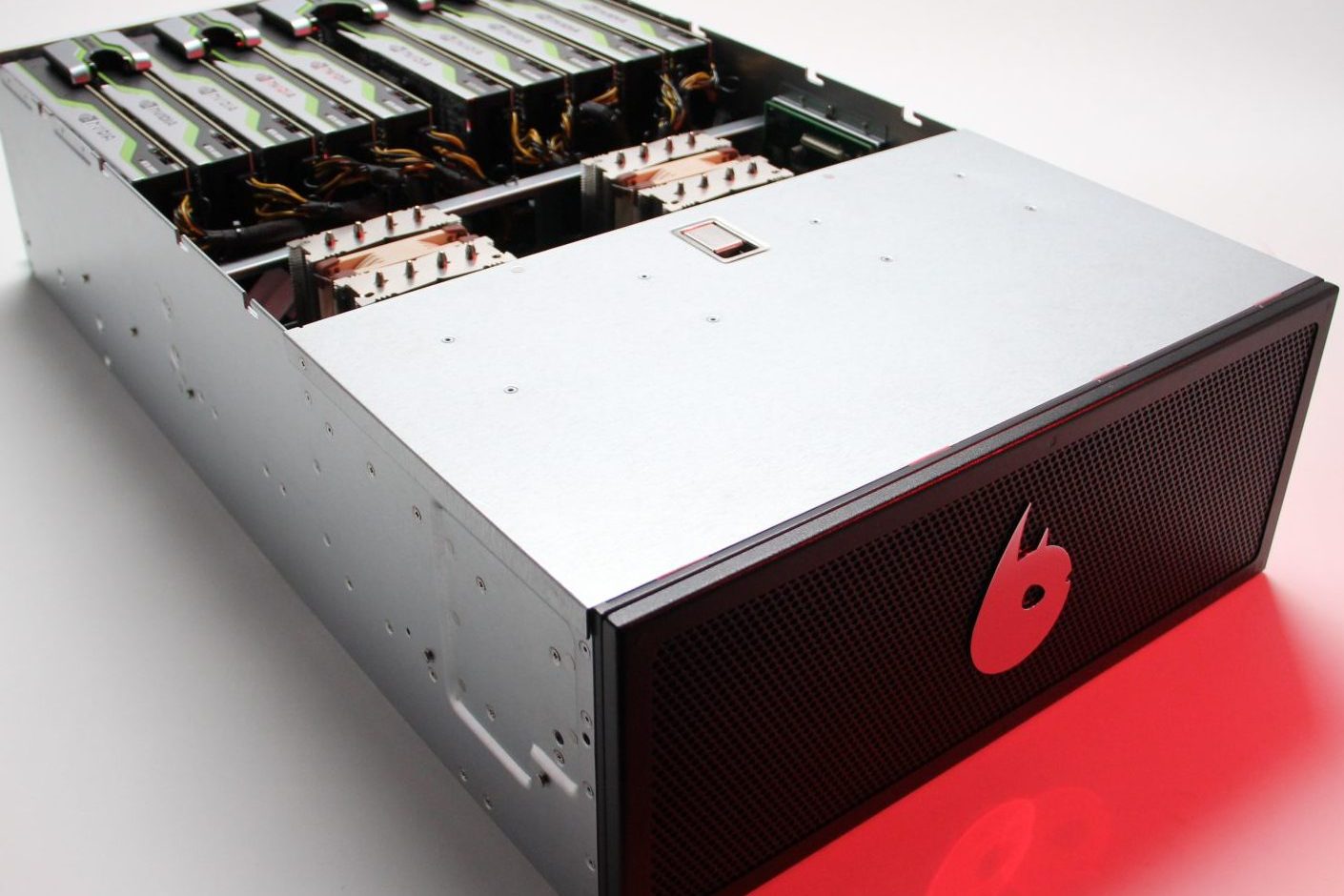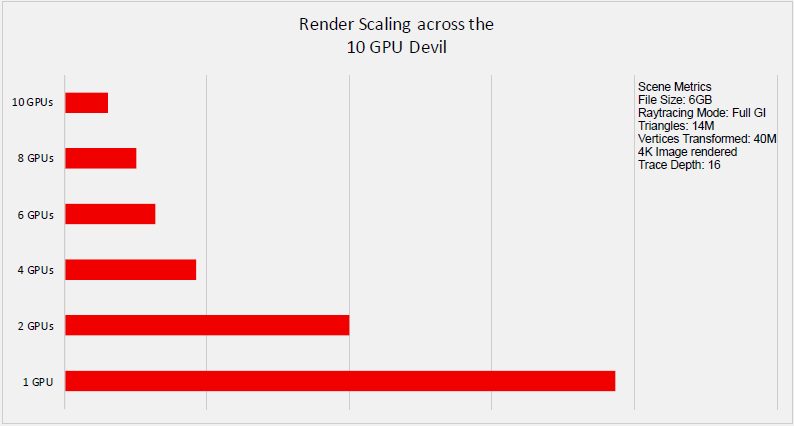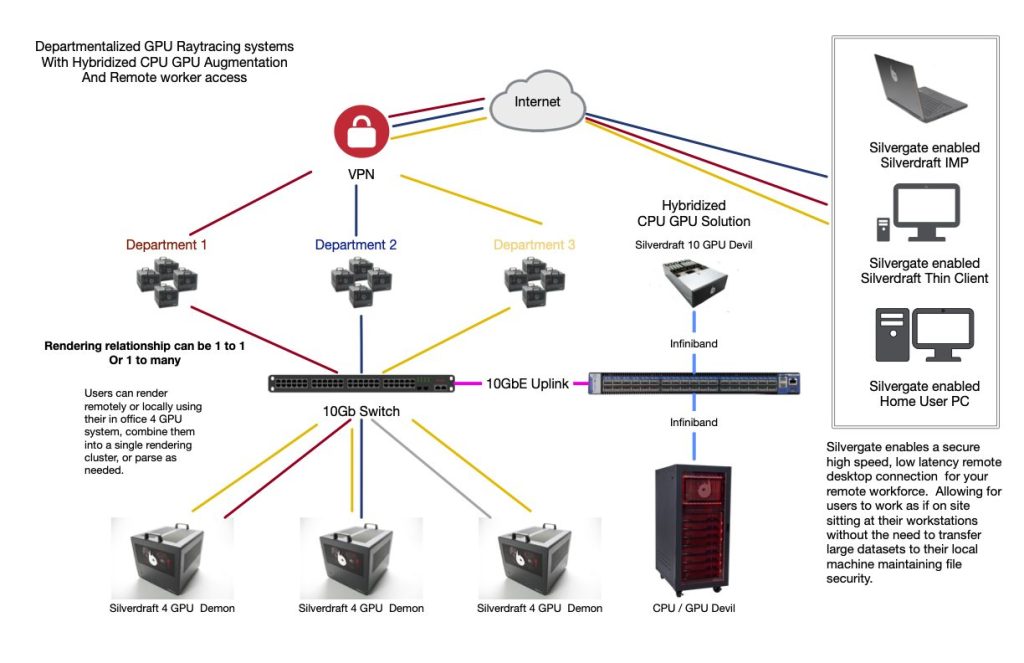by Amy Gile – Co-Founder and CEO, Silverdraft

Real-Time rendering is not a valid pain point! It has been solved for years, it has just become a workaround, and once that workaround has been removed, it is amazing what can be created, saving time and money.
When I founded Silverdraft, my goal was to free artists through technology so they could design and create without limitations. Rendering was the first thing we solved.
At Silverdraft, we focus on the full solution and optimizing the workflow for our clients. This allows our clients to be more creative, save time and money and get their products to market faster. We build high-performance render systems, design desktop and mobile workstations, and support them by integrating visualization tools. We understand how to best architect computer hardware to drive software and the tasks that designers are doing with the software at maximum performance. We study the interactions between CPU and GPU and storage and networking to optimize for the best possible performance in a cool, small, quiet and sustainable footprint
We live to empower designers and artists to make their best work by having tools that are fast and fluid. We have been working closely with Autodesk and VRED for many years now. In fact, when I founded Silverdraft, Autodesk was at my side as the software driving my first supercomputer, and when we released our DEVIL mini supercomputer it launched with VRED running on it like magic! And we always get a thrill out of seeing how fast we can drive the amazing images it generates.
Recently we have been working on ways to restructure the delivery of render performance across the enterprise with an eye towards better resource utilization, while also delivering higher performance where it can be best used. How our clients work and what they actually need is what we must ensure we are developing and delivering to them.
I would like to walk you through how these innovations can help you get the most out of VRED.
Scalability
Let’s talk about scalability. VRED scales wonderfully with more compute power. Here we see some data from a test with a fairly complex scene, rendered with different GPU counts, on a single machine. We see a nearly linear progression in performance as we add GPUs, from one to ten, in a single system.

Now, what if we could scale this performance up and down, and distribute it throughout the enterprise?
What if we could both distribute GPU or CPU power to where it is needed when it is needed for design or review tasks, and then, when there is a big complex render job that needs to be done, pull those resources together (at night or on a weekend) to process through a big render queue efficiently and quickly?
Flexibility
What if we could access even more render capacity on-demand based on need? Maybe you have a big design review next week and you have to power through a lot of renders and revisions in a hurry. But you don’t have the budget to buy that much compute power to sit in your server room all the time.
This is what we propose with an architecture I would describe as distributed computing with on-call burst capacity. We call it SilverBurst. I think of it as liquid computing. You get all the benefits of high GPU or CPU-count servers while also, through remote access and virtualization distributing, compute power further through the organization.
Here is a diagram of one example of an on-premises architecture. You have departmental workstations sharing a high bandwidth connection able to group together to share rendering power when needed — while operating as traditional workstations for individuals. Using VRED Core instances running on the servers, users can access the render power of VRED even on a low-end workstation or laptop.

Cloud capacity
Now for the big jobs. We add cloud burst capacity from a remote private cloud. Using secure VPN connections to compute resources at a Silverdraft centralized datacenter, render jobs can be allocated even more GPU or CPU resources on a burst demand basis.
Silverdraft Burst Services provide VRED Core compatibility with comprehensive encryption to ensure your data is completely secure. You can manage as much or as little of the platform as you need, from bare metal to custom images to standard VRED Core server access. No data is ever shared between jobs. Systems are fully sanitized between each customer access. And because of our high-performance Infiniband interconnect, you will be able to access unimaginable performance. In many cases, it is more cost-effective to use brute force compute to process a job than it is to use valuable human resources doing endless model, texture, and material optimizations for performance.
The future of supercomputing
As I look to the future and the needs of our clients, it is critical to give scalability and flexibility in their workflow and their compute needs. Compute should never be the bottleneck, and the future of hardware is for it to disappear.
We want to empower VRED users to do their best work and free them from the mindless intricacies of scene file performance optimization. Everyone in the organization should be able to access the full power of VRED’s incredible rendering. We can deliver the power for the organization to reach supercomputing levels of performance without spending a fortune on GPUs.
Autodesk continues to innovate and drive technology together with partners to give clients the tools they need to create! My appreciation to Autodesk for supporting me and Silverdraft and following this journey of high-performance computing with me. We look forward to a continuing dialog with all Autodesk and VRED users.
Please reach out to us if you would like to discuss these ideas further. We would love to hear from you, as you are the ones who inform us as to what our technology needs to be!
Amy

Amy began her career in the media and entertainment industry in multiple aspects of the industry, including actor and producer. Amy identified a need for a faster solution and workflow for the entire production and the artist. The demands of rendering, animation, and visual effects required a sophisticated approach to computing. Amy knew there was a better, faster way to bring complex content to the masses. She co-founded Silverdraft and has dedicated herself to enabling and accelerating the visualization workflow with complete solutions for various industries, including Automotive, AEC, and Media and Entertainment. Amy is a TEDx speaker and is passionate about technology and pushing what’s possible.